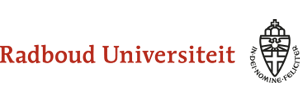American English Phonetics
Another American English Faculty Project
4.6 The consonant system of AN
The C-system of AN
| Obstruents | Sonorants | ||
|---|---|---|---|
| Stops | Fricatives | Nasals | Approximants |
| /p, b/ Piet, biet | /f, v/ fee, vee | /m/ mee | /l/ la |
| /t, d/ tak, dak | /s, z/ C, zee | /n/ nee | /r/ ra |
| /k, g/ keel, goelasj | /ʃ, ʒ/ sjokken, jury | /ŋ/ eng | /j/ ja |
| /x, ɣ/ chloor, geel | /ʋ/ wie | ||
| /h/ hal | |||
Note that the two marginal consonant phonemes of AN, /g/ and /ʒ/, have been included in the above table. It is also important to note that most speakers of AN have no /ɣ/ in their system and pronounce logend and loochent as well as chloor and gloor alike. If you are one of them, ignore /ɣ/, and always use /x/ in your transcriptions. Also AN /v/ may be absent from the C-system of speakers of AN, or may be restricted to intervocalic positions.
By way of illustration, transcriptions are here given of the pairs of Dutch words given in the first chapter.
| 01 | wendde | – | wenden | | | /ˈʋɛndə/ | ||
| 02 | (ik) teken | – | (een) teken | | | /ˈteˑkən/ | – | /ˈteˑkə/ |
| 03 | jou | – | jouw | | | /jɔu/ | ||
| 04 | u | – | uw | | | /y/ | – | /yʋ/ |
| 05 | ik vil hem | – | ik film | | | /(ɪ)k ˈfɪləm/ | ||
| 06 | Baarn | – | baren | | | /ˈbaˑrən/ | – | /ˈbaˑrə/ |
| 07 | niet Sien | – | niets zien | | | /nit ˈsin/ | ||
| 08 | hij gaat | – | gaat hij? | | | /hɛi/ | – | /i/ |
| 09 | kastje | – | kasje | | | /ˈkɑʃə/ | ||
| 10 | (ik ken) haar | – | (lang) haar | | | /(d)ər/ | – | /haˑr/ |
Here are some AN words. Please give their orthography.
| 01 | /ˈbɑkər/ | – | |
| 02 | /maˑnt | – | |
| 03 | /bɑŋ/ | – | |
| 04 | /sxɪp/ | – | |
| 05 | /ˈloˑpə/ | – | |
| 06 | /rɔu/ | – | |
| 07 | /kɑpiˈtɛin/ | – | |
| 08 | /ˈkrɛːmspulɪŋ/ | – | |
| 09 | /bœydəldir/ | – | |
| 10 | /ˈsɛstəx/ | – | |
| 11 | /ˈmujləkər/ | – | |
| 12 | /ˈzɔntflut/ | – |
